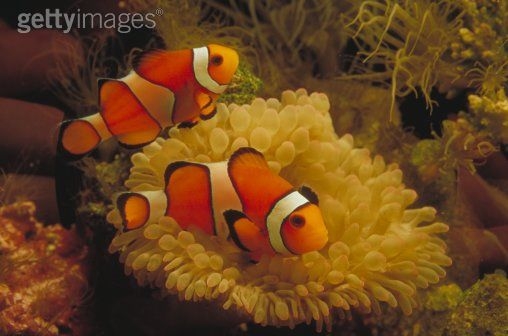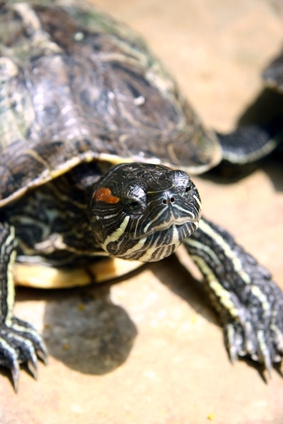
How to Care for Saltwater Fish. So you saw "Finding Nemo" and you want to own him, or you're sick of guppies and tetras and you want to take care of the much brighter, arguably more interesting looking saltwater fish. Fair enough. Please bear in mind that if starting a salt-water aquarium from scratch, you need to wait at least a month before adding any fish so that the water conditions are appropriate for the fish. Otherwise it will die very quickly.

Set up your new aquarium (10 gallons is the recommended minimal size for salt-water fish) on a steady aquarium stand, with proper filtration. I recommend the Nanocube, Biocube--most "cube" systems are ideal as they contain most of the necessary components, although they are made of glass and glass, while clearer than acrylic, is heavier, so apartment dwellers take note. Add your protein skimmer on top and a few inches of sand for the bottom. Mix in the recommended aquarium salt with your distilled water and add it to the tank and let it settle overnight.
Add live or cultivated rock. Your aquarium needs to go through what is called a nitrogen cycle, during which the ammonia, nitrates and nitrites in your tank stabilize and beneficial bacteria grow. Adding live or cultivated rock to your saltwater aquarium not only provides your future fish good places to hide and required planting spots for any anemones or corals you may wish to add to set up a reef, but also speeds up this cycle. Try to find a local fish store that specialized in saltwater fish--they will have the best selection of what you need--and get as many as recommended for the size of your tank. Don't worry if the rocks take up a lot of space in the tank, they are going to be your fish's actual home. Your recommended temperature is 78-82 degrees Fahrenheit, and up to 85 if you will have a reef.
Test your water every few days for PH, nitrates, ammonia and nitrites. For saltwater tanks, the PH should be about 7.6 to 8--and more if you plan on adding a reef--and with all tanks, the rest are supposed to be 0. The higher the nitrates and ammonia are, the less likely the fish are to survive. If the PH is too high or too low, you can buy PH adjusters in pet stores. If anything else is too high, you'll have to do a water change. You will find yourself doing water changes several times over the course of a month until everything is stabilized.
Add fish. After a month, the tank should be cycled and you can start to add fish. But add them slowly--every new fish introduced to your aquarium will produce waste (ammonia) and it can overwhelm the tank if you add too many of them. For starters, get a "cleaning crew"--a couple of hermit crabs and a snail, perhaps--they will eat the algae in your tank, so they're very low maintenance. Ask your local pet store what fish are ideal for your size of a tank.
Continue testing the water once a week or once every two weeks--if nitrates, nitrites or ammonia is too high, carry out a 20 to 30 percent water change.
 How to Care for a Baby Cooter Turtle
How to Care for a Baby Cooter Turtle
H
How to Care for a Baby Cooter Turtle
How to Care for a Baby Cooter Turtle
H
 5 Ideas for Dealing With the Loss of a Pet
Those who hav
5 Ideas for Dealing With the Loss of a Pet
Those who hav
 How to Care For a Stray Cat
How to Care For a Stray Cat
How to Car
How to Care For a Stray Cat
How to Care For a Stray Cat
How to Car
 Choose a Pet Food for Your Dog or Cat’s Specific Needs
Imagine eatin
Choose a Pet Food for Your Dog or Cat’s Specific Needs
Imagine eatin
 Keeping Up with Your Pet's Health: Vaccinate with Rabies Shots
A slow, agoni
Keeping Up with Your Pet's Health: Vaccinate with Rabies Shots
A slow, agoni
Copyright © 2005-2016 Pet Information All Rights Reserved
Contact us: www162date@outlook.com